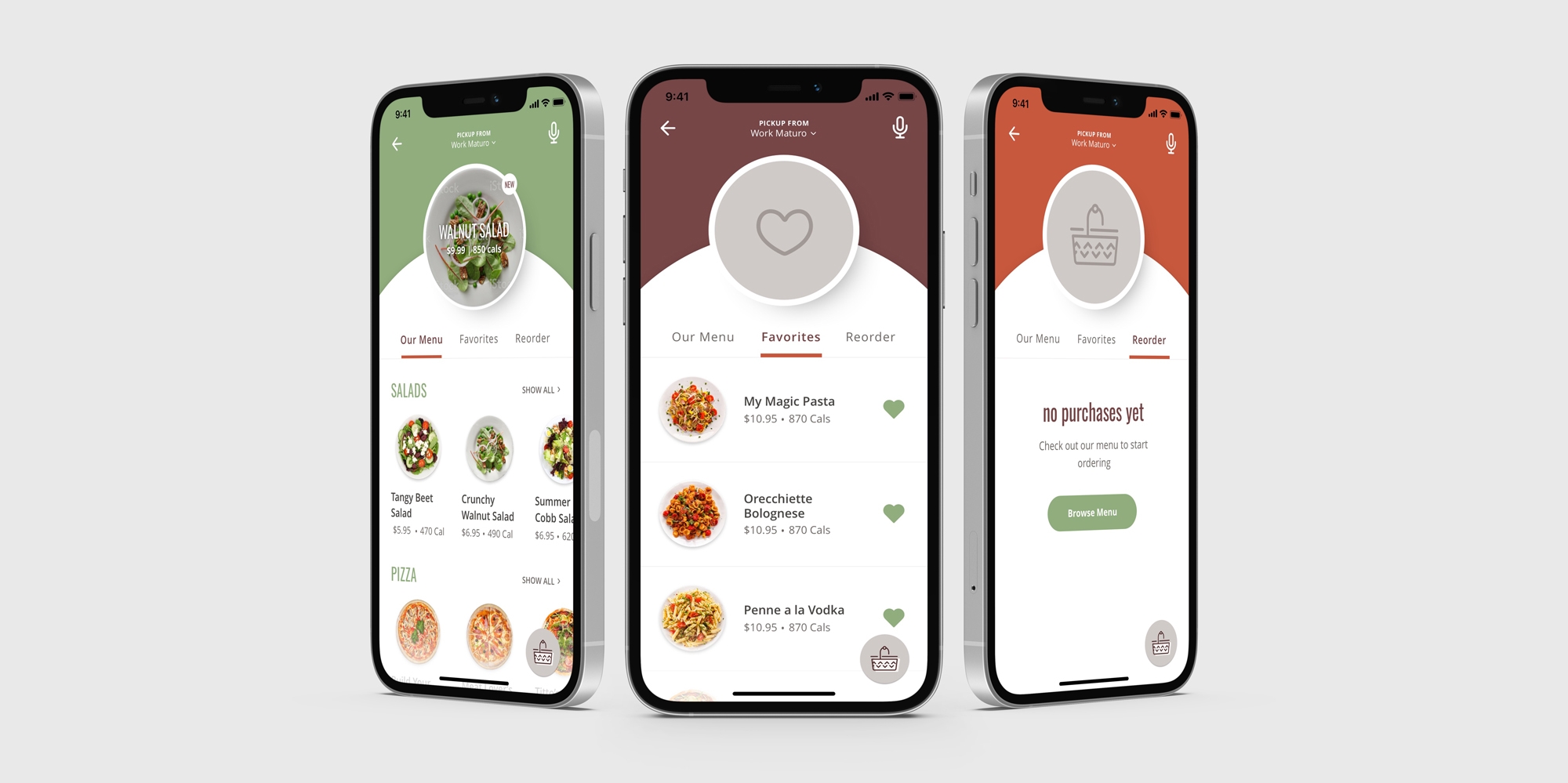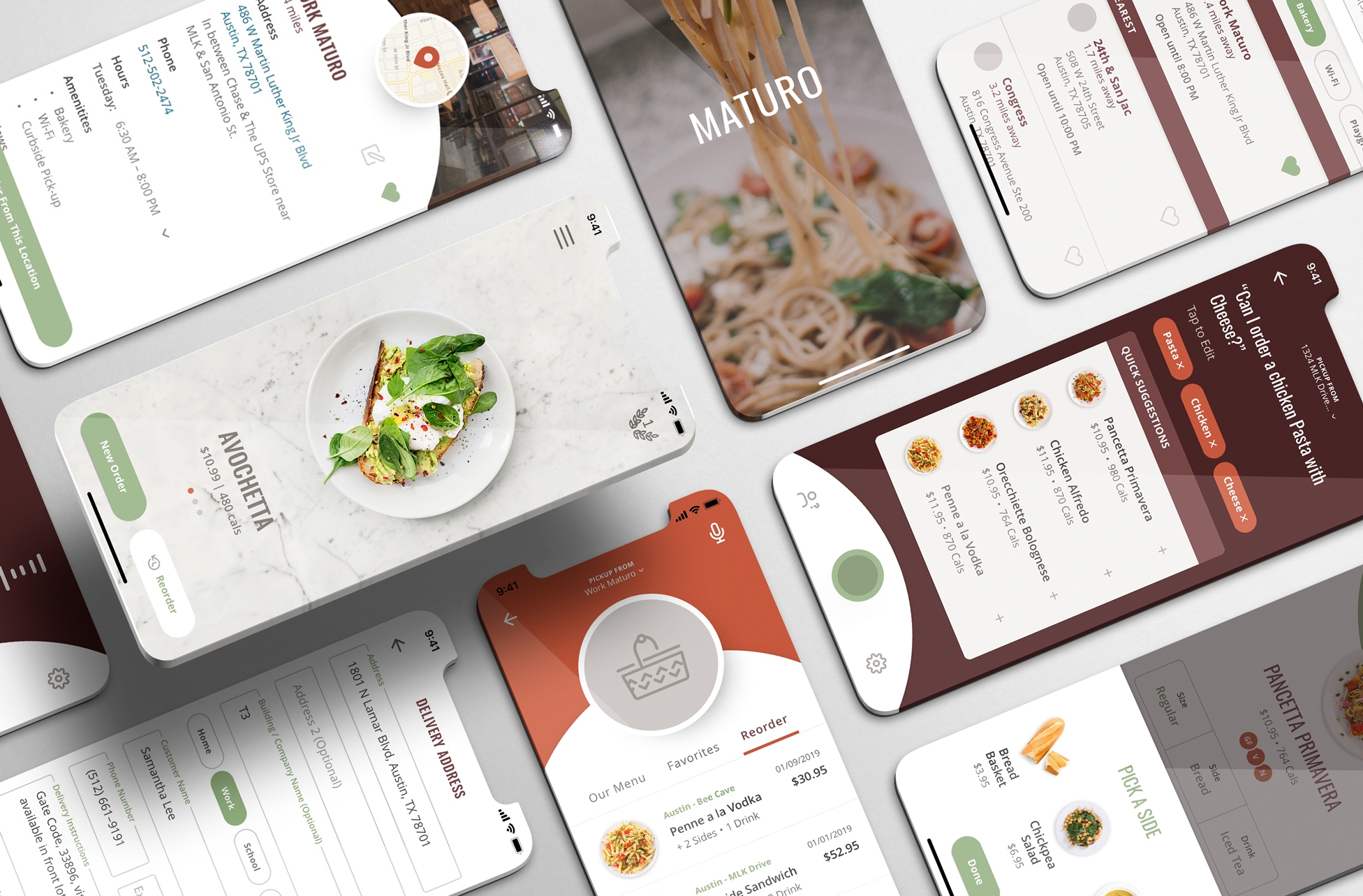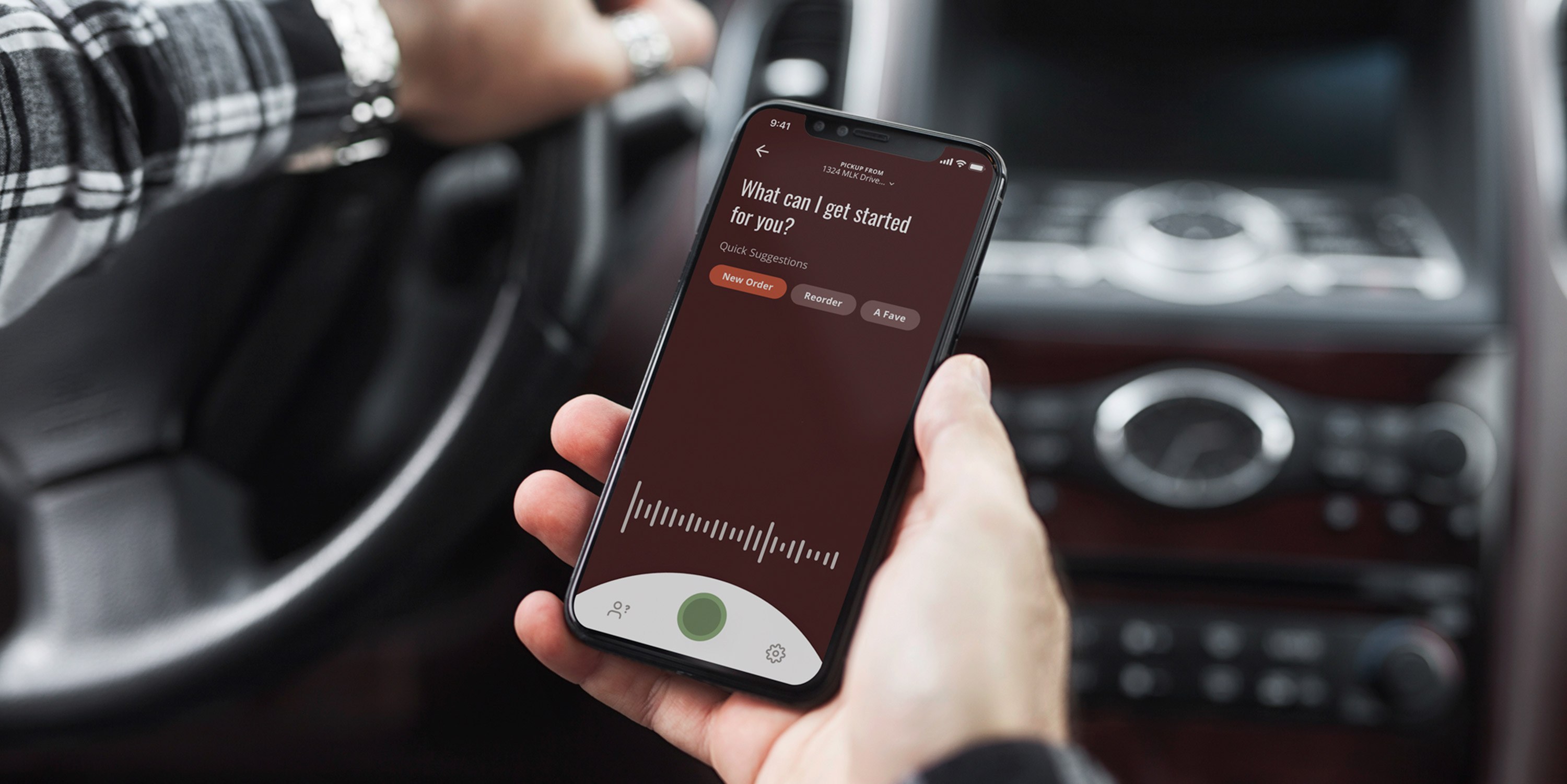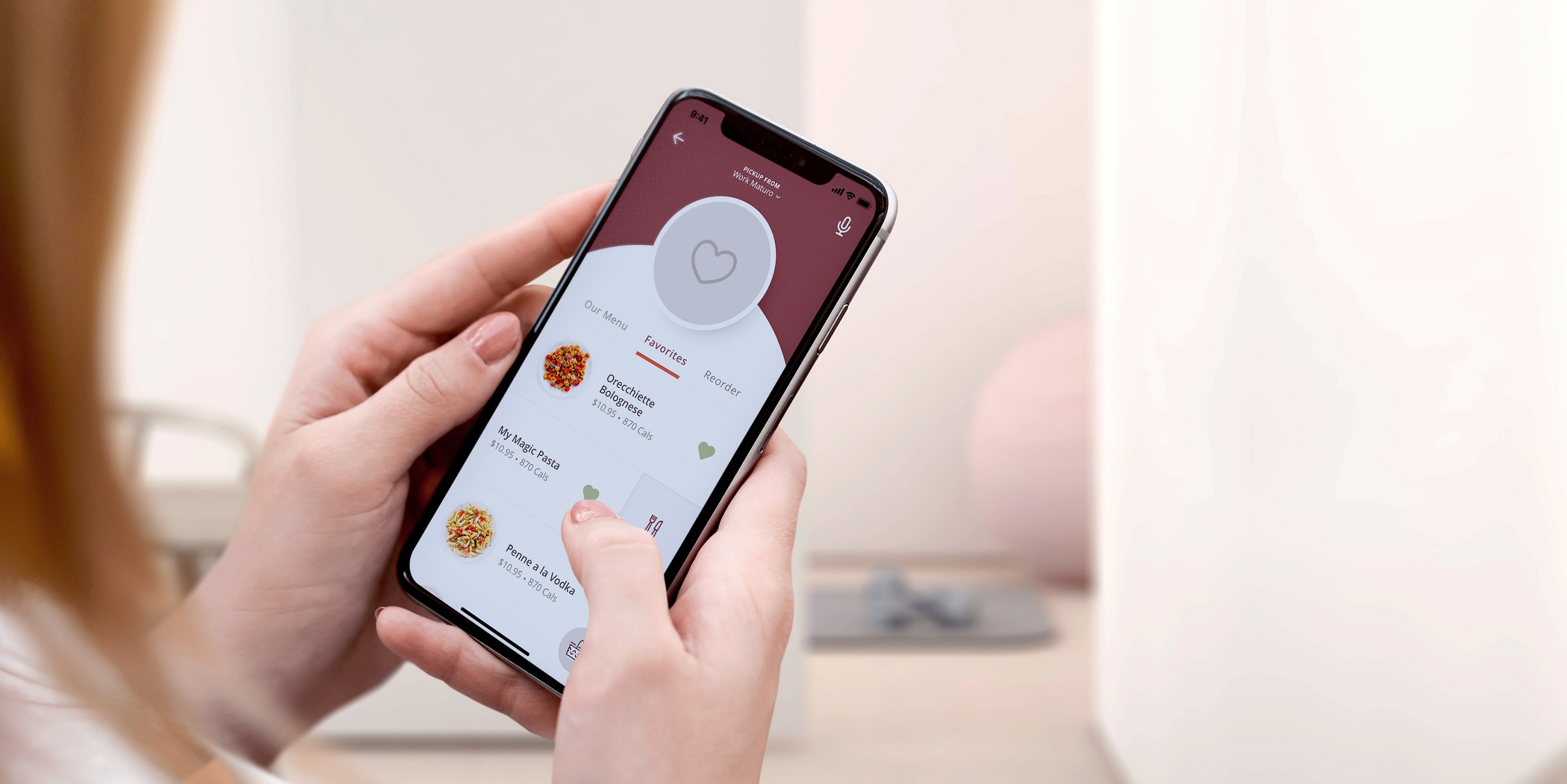Maturo
Productizing the Restaurant Experience
Agency: T3 | Role: Lead Designer
With many completed or in-progress restaurant projects, T3 has a foundational knowledge for what a best-in-class online ordering and loyalty experience can be. To streamline the product design process we built the Maturo design system and component library with these best-in-class principles in mind.
Problem
With teams constantly in flux, quick service restaurant (QSR) projects generally have designers with no previous experience working on a QSR. They are not able to transfer their knowledge from past projects and require design and research to start from scratch. This cripples productivity when speed is essential. These projects generally have short turn around and a lot of time is spent building from the ground up rather than utilizing pre-existing components.
Solution
Create a restaurant digital product design system and platform that can be reused for future clients and projects. The system should be responsive and cover off on 70-80% of all interactions and functions related to online ordering and loyalty within any restaurant project. The product should have a light and flexible tone for each component and template to be reused for any client/brand. The general design should be a native/touch/mobile-first approach to the experience as mobile ordering grows globally.
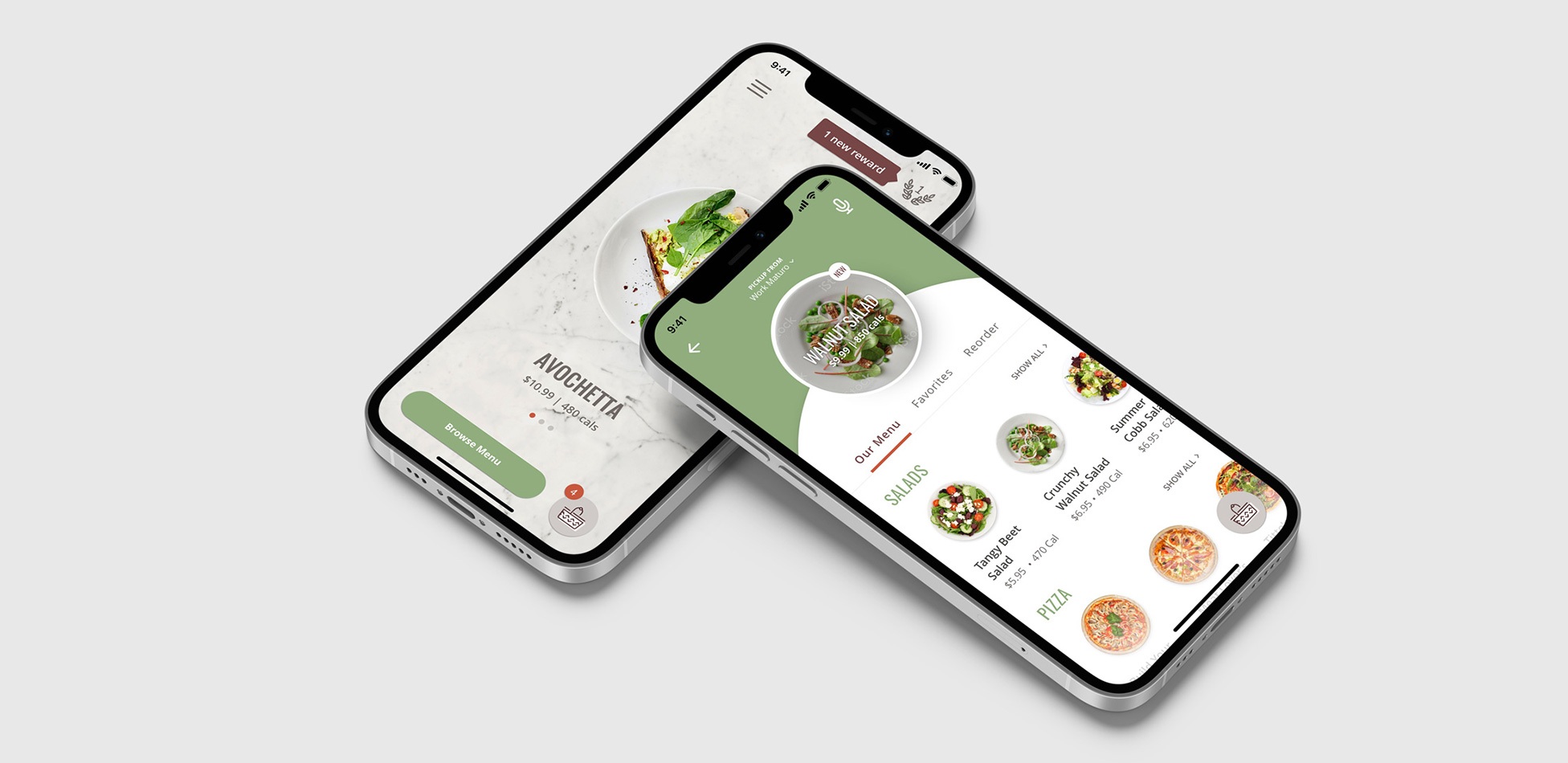
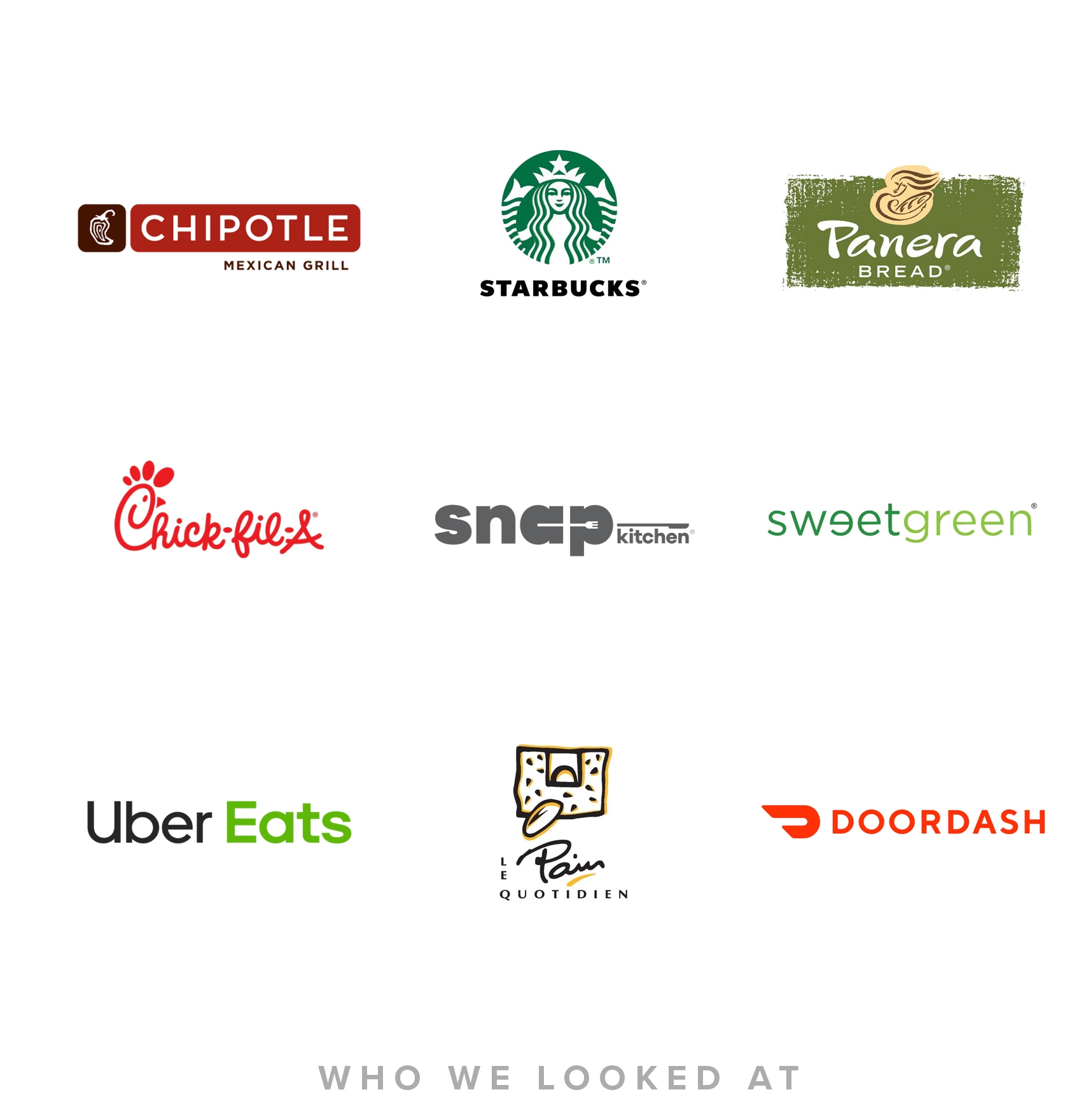
The Process
Stakeholder interviews were performed to understand the challenges faced by previous teams and to better understand functionality/experience limitations due to different APIs. Existing design patterns and paradigms of restaurant apps were examined to analyze and apply useful features that create a best in class experience. We looked at features and patterns that deliver value, efficiency of use, and provided an intuitive experience for customers. Our list of features and functions were then prioritized for MVP by weighing technical effort and value. The Atomic Design methodology was used to create a component library and templates used in essential online ordering flows. Fake restaurants were then designed to test the system and see how quickly brands could be interchanged.
